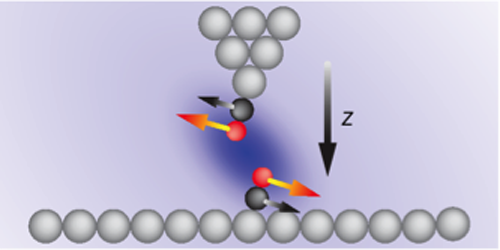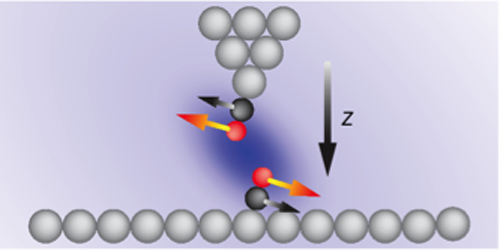Detecting a Molecular Duet
Molecules vibrate in many different ways—like tiny musical instruments. Nearby molecules can even vibrate in “harmony” with each other, as observed in large molecular systems. For the first time, researchers have detected such vibrational coupling between two individual molecules. The experimental technique—based on a scanning tunneling microscope (STM)—may offer a new way to study the chemical components of complex molecules.
Molecular vibrations can be studied with so-called inelastic electron tunneling spectroscopy (IETS). This technique is based on the fact that a molecule adsorbed on the tip of an STM probe (or on the surface beneath the probe) will affect the tunneling rate of electrons between probe and surface. In particular, one can identify peaks in the tunneling current spectrum as the voltage is varied. These peaks correspond to vibrational modes of the adsorbed molecule.
Wilson Ho at the University of California, Irvine, and colleagues performed IETS experiments in which carbon monoxide (CO) molecules were allowed to adsorb on both tip and surface. Working at subkelvin temperatures, the team took tunneling spectra at various tip-sample distances. The molecules repel each other at short-range distances, and this interaction can couple their vibrations. The team detected this coupling by identifying a unique peak in the tunneling spectra. They verified this identification with density-functional calculations. The observed peak shifted in frequency as the tip moved closer to the surface. Ho’s team ascribed this shift to a tilting of the CO molecules, which altered their respective alignment and the intermolecular separation. Other molecules, like OH and SH, should have unique vibrational couplings to CO, implying that one could use a CO-functionalized tip as a sensitive chemical probe.
This research is published in Physical Review Letters.
–Michael Schirber
Michael Schirber is a Corresponding Editor for Physics based in Lyon, France.





